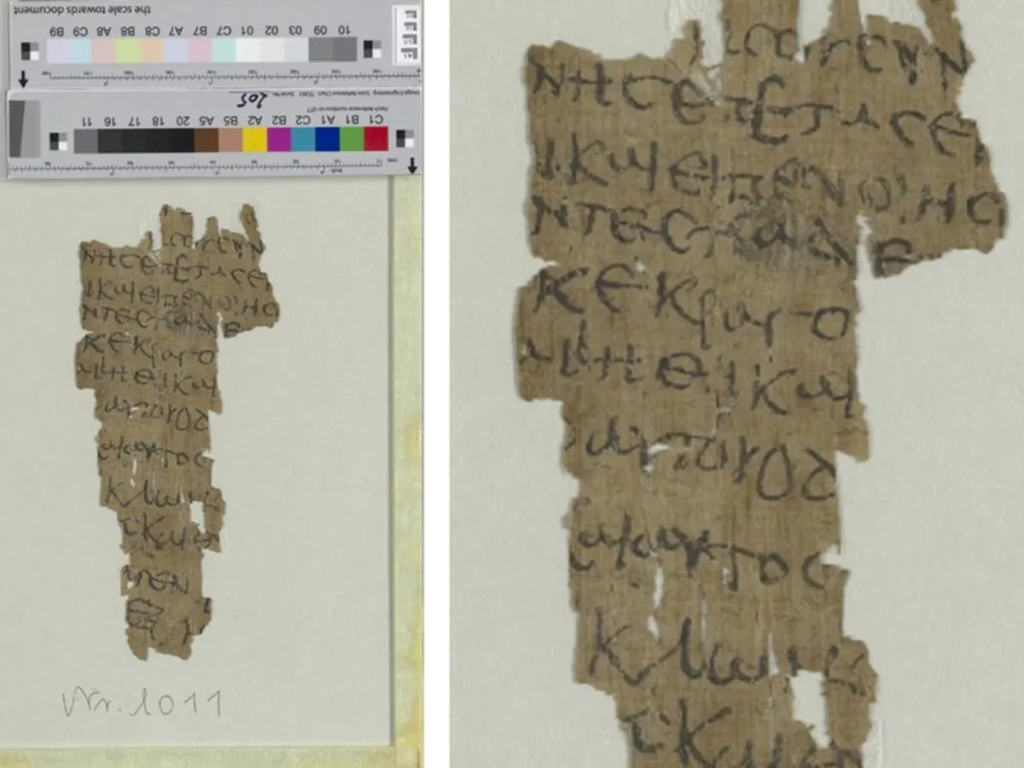
Oldest biblical manuscript of Jesus’ childhood discovered in Germany
Researchers in Germany have identified a newly deciphered manuscript dating back 1,600 years as the oldest record of the childhood of Jesus Christ.
Researchers have discovered the oldest surviving copy of the Infancy Gospel of Thomas. Dating to the 4th or 5th century AD, the fragment is part of a Gospel that recounts episodes of Jesus’ childhood. Until now, the oldest version of this gospel was believed to be an 11th-century codex.
Papyrus fragment 1011 with the inventory number P.Hamb.Graec, describing the episodes of Jesus’ childhood, was in the Carl von Ossietzky State and University Library in Hamburg.
It was believed to be nothing more than a very old, daily note, like a private letter or a shopping list. Researchers now believe that the papyrus fragment, written more than a thousand years ago, is not just a note, but the oldest surviving written copy of a gospel account of Jesus’ early life.
📣 Our WhatsApp channel is now LIVE! Stay up-to-date with the latest news and updates, just click here to follow us on WhatsApp and never miss a thing!!
The papyrus fragment, which had been sitting on shelves for decades, was examined by papyrologists Dr. Lajos Berkes of the Institute for Christianity and Antiquity at Humboldt University Berlin (HU) and Professor Gabriel Nocchi Macedo of the University of Liège. They published their findings in the journal Zeitschrift für Papyrologie und Epigraphik.
The document, translated by Berkes and Macedo, dates between the 4th and 5th centuries.
According to the press release, the stories in the document are not biblical, but the papyrus contains anecdotes that would have been widely shared in Antiquity and the Middle Ages. A few words in the fragment describe a “miracle” Jesus performed as a child, according to the Gospel of Thomas, which says he brought clay figures of birds to life.
Macedo said the document is written in Greek, confirming for researchers that the gospel was originally written in that language. Measuring roughly four inches by two inches and containing only 13 Greek lines (about 10 letters per line), the fragment comes from late ancient Egypt, according to the news release.

This is an important discovery for the research field, as the manuscript dates back to the early days of Christianity. Until now, an 11th-century codex was the oldest known Greek version of the Gospel of Thomas, probably written in the 2nd century AD. These writings were not included in the Bible, but their stories were very popular and widespread in Antiquity and the Middle Ages.
“The fragment is of extraordinary interest for research,” says Lajos Berkes. “On the one hand, because we were able to date it to the 4th to 5th century, making it the oldest known copy. On the other hand, because we were able to gain new insights into the transmission of the text.”
“Our findings on this late antique Greek copy of the work confirm the current assessment that the Infancy Gospel according to Thomas was originally written in Greek,” adds Gabriel Nocchi Macedo.
“It was thought to be part of an everyday document, like a private letter or a shopping list, because the handwriting looks so clumsy,” Berkes said. “We first noticed the word Jesus in the text. Then, by comparing it to other digitized papyri, we deciphered it letter by letter and quickly realized that it could not be a daily document.”
The new technology helped Berkes and Macedo decipher the language in the fragment and compare it to other early Christian texts.
Source: Arkeonews
Cover Photo: Guido of Siena (1230-1290), Lindenau Museum, Altenburg
You may also like
- A 1700-year-old statue of Pan unearthed during the excavations at Polyeuktos in İstanbul
- The granary was found in the ancient city of Sebaste, founded by the first Roman emperor Augustus
- Donalar Kale Kapı Rock Tomb or Donalar Rock Tomb
- Theater emerges as works continue in ancient city of Perinthos
- Urartian King Argishti’s bronze shield revealed the name of an unknown country
- The religious center of Lycia, the ancient city of Letoon
- Who were the Luwians?
- A new study brings a fresh perspective on the Anatolian origin of the Indo-European languages
- Perhaps the oldest thermal treatment center in the world, which has been in continuous use for 2000 years -Basilica Therma Roman Bath or King’s Daughter-
- The largest synagogue of the ancient world, located in the ancient city of Sardis, is being restored











Leave a Reply